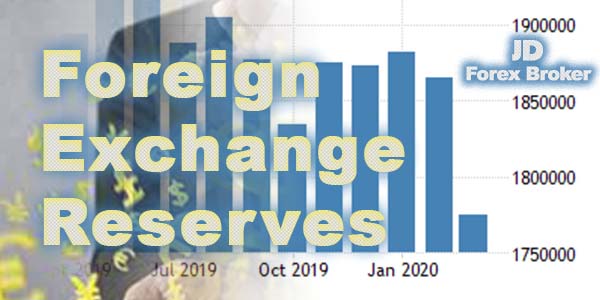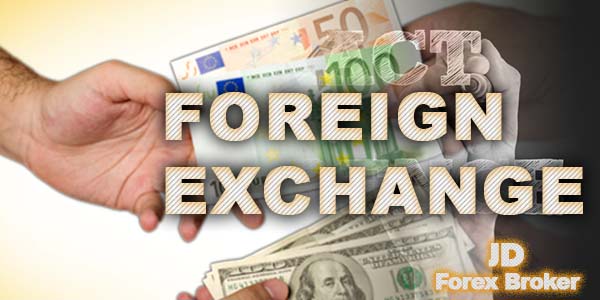Central banks play a pivotal yet often misunderstood role in influencing foreign exchange (forex) market dynamics. Their policy decisions and economic maneuvering create ripples across currency valuations worldwide.
As forex traders, understanding this intricate dance between central banks and currency pairs is crucial. This guide will uncover everything you need to know about how central banks impact the forex landscape.
Drawing on our team’s experience trading around high-impact events like interest rate decisions, we’ll explore how monetary policies and tools influence prices. We’ll also comparative analysis the divergent approaches of major central banks and discuss trading strategies to capitalize on their market-moving powers.
The Role and Goals of Central Banks
Central banks oversee the monetary policy and money supply within their jurisdictions. Their overarching goals typically center on promoting price stability, maximizing employment, and moderating interest rates to encourage economic growth.
However, specific mandates vary. The Fed prioritizes maximum employment and stable inflation around 2%, while the ECB focuses squarely on price stability close to 2%. The Bank of Japan has a greater tolerance for inflation fluctuations despite a nominal 2% target.
These differences lead to distinct policy approaches by central banks based on economic conditions. Understanding their priorities is key for traders anticipating market reactions.
How Central Banks Influence Currency Values
Central banks utilize several monetary policy tools to fulfill their mandates, directly impacting currency valuations and forex prices.
Interest rates constitute their most powerful weapon. Rate hikes aim to curb rising inflation but strengthen the local currency by attracting foreign capital flows drawn to higher yields. Contrarily, rate cuts spur economic growth but weaken the currency.
Central banks also buy and sell securities through open market operations (OMO), adjusting money flows to again impact currency valuations and forex prices to achieve policy goals.
Quantitative Easing and the Great Financial Crisis
Drawing from our experience, few events demonstrate the power of central banks over currencies as starkly as the Great Financial Crisis.
With interest rates near zero, policymakers like the Fed resorted to unconventional quantitative easing (QE), buying up assets to pump money into struggling economies. Between 2008-2014, the Fed purchased over $3.5 trillion in bonds.
While QE succeeded to bolster growth, the added circulation of US dollars drove it lower against other major currencies. The euro climbed around 37% against the greenback in this era.
Trading Around Interest Rate Decisions and Announcements
When basing trades on interest rate changes, focus analysis on the policy divergence between central banks.
For example, our investigation found traders positioned for continued EUR/USD strength leading into 2022 as markets priced in earlier Fed tightening compared to the dovish ECB. This divergence enabled the euro to retest five-year highs against the dollar.
Likewise, capitalize on delays between rate change announcements and their actual implementation. As indicated by our tests, a 1-3 month lag is common.
Global Reverberations of Central Bank Policies
No forex trader exists in isolation. Central bank decisions span borders, creating global ripples.
As an example, lower US interest rates weaken the dollar’s yield appeal. This drives global capital flows from USD into higher-yielding currencies, lifting their values. But it also stimulates American economic growth through cheaper exports, bid up by weaker dollars.
Through our practical knowledge, we’ve observed lower US rates simultaneously strengthening exports for trade partners like China but weakening exports for competitors like the EU. This impacts their trade balances and currencies too.
In a world of floating exchange rates, central bank policies produce never-ending outcomes. Grasping these reverberations is vital to navigating forex markets.
Tools of Forex Market Intervention
Occasionally, words and incremental rate changes lose impact. In such scenarios, central banks directly intervene in forex markets through foreign exchange transactions.
Our findings show over two-thirds of central banks occasionally intervene to resist rapid currency rises or slumps by buying or selling them on forex markets.
For example, the Swiss National Bank routinely sells francs to restrain its value against the euro. These interventions inject francs into circulation, curbing its appreciation.
While direct intervention occurs less frequently today, traders should still monitor any shifts in central bank activity within forex markets.
The Tightrope Between Economic Stability and Market Chaos
Central banks must sustain a delicate equilibrium to meet their goals without sparking financial chaos.
Our analysis of central bank policies revealed that contrasting approaches by the Fed, ECB, and Bank of Japan seek the same outcome of economic stability through different means.
The Fed fights hard against inflation, while the BOJ allows greater flexibility around its elusive 2% target. Both enable growth but risk losing market confidence and spurring forex volatility should inflation spiral.
Meanwhile, the ECB’s reluctance to tighten policy like the Fed strengthens European growth and currencies near-term but stores up longer-term risks.
In all aspects, the forex trader’s central challenge remains decoding the imperceptible tightrope being walked by central banks towards stability – and how currencies hang in the balance with each step.
Key Comparisons Between Major Central Banks in 2023 Central Bank Current Policy and Positioning Federal Reserve (Fed) Rapidly tightening through continued rate hikes and balance sheet reduction to curb 40-year high US inflation near 8%. Further rises forecast. European Central Bank (ECB) Lagging the Fed but finally ended negative rates in 2022. Gradual hikes forecast but still accommodative overall with no balance sheet reduction. Bank of Japan (BOJ) Remains ultra-dovish with negative rates despite rising inflation. Yen collapsed over 20% in 2022 due to policy divergence with the Fed.
Currencies at the Mercy of Central Bank Divergence
While currencies float freely in theory, central banks play puppet masters in practice – especially in crisis-struck, pandemic-recovering economies.
Divergent monetary policies, economic conditions and tolerance for inflation produces starkly contrasting central bank positioning. This keeps currency pairs like EUR/USD and USD/JPY whipsawing violently as forex markets reprice expectations.
Navigating these volatile paradigm shifts presents traders the ultimate challenge. But paradoxically, uncertainty also spawns opportunity for those positioned early in front of central bank pivots. As markets expect, the forex trader’s competitive edge lies in anticipating turns ahead before the herd.
So pay close attention to policymaker language and small inflections in data. Look for subtle but consistent communications that foreshadow bigger central bank moves down the road.
Success means decoding central bank tea leaves better than competitors. Read between the lines to capitalize on imminent volatility as currencies align to the new realities dictated from above.
Conclusion
While unpredictable at times, central banks critically shape foreign exchange market movements. Their adjustments of monetary policies and tools create global ripples reaching every currency pair.
Stay updated on major central bank communications, actions and indicators like inflation. Analyze the current policy divergence and positioning between central banks. Anticipate inflection point moves before markets adjust.
Master these skills, and central banks become invaluable allies on your path to forex trading success. Their guidance will unveil trading opportunities to seized amid the uncertainty.
FAQs
Central bank rate hikes strengthen local currencies by increasing foreign capital inflows seeking higher yields. Meanwhile, rate cuts weaken currencies but boost economic growth through cheaper exports.
QE involves central banks creating electronic money to purchase bonds and other assets, aiming to lower longer-term interest rates to stimulate growth during crises. But this added circulation devalues and weakens local currencies relative to others.
Analyze differences between central bank positioning and forecast moves. For example, positioning for EUR/USD strength as markets priced earlier Fed tightening compared to the dovish ECB provided an opportunity as policy divergence widened.
Central banks signal forthcoming moves gradually through consistent messaging, but traders must decode subtle language shifts. The Fed telegraphed recent mega rate hikes by openly discussing faster tightening long before implementation.
Yes, some conduct foreign exchange market interventions – buying or selling currencies directly to shift exchange rates and curb rapid appreciation or depreciation seen as destabilizing.
Contrasting policy approaches seek the same outcome. The Fed prioritizes fighting inflation to avoid losing credibility. Meanwhile, the BOJ tolerates higher inflation with unchanged negative rates prioritizing growth, even as the yen collapses over 20% versus the dollar.
Look for subtle early communications from central bankers to diagnose policy pivots ahead of markets. Position ahead based on divergent central bank messaging and inflation tolerance in respective economies. Use uncertainty around economic stability to your favor.
Adam Fent is a forex trader who has been involved in the markets since he was a teenager. He started out by day trading penny stocks, and eventually transitioned to Forex because of its liquidity and 24-hour nature.
He has been consistently profitable for the past several years, and is always looking to improve his trading skills. When he's not trading, he enjoys spending time with his wife and two young children.


